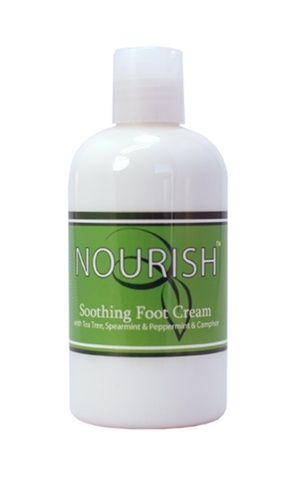Cracked Heels
Heal and Treat Cracked Heals
Cracked heels can be a result of lack of moisture and dryness and bacteria and fungus. Cracking often occurs around the toes, balls of the feet and on the sides of the heels - often lengthening into the bottoms of the feet. More prevalent during the summer and warm months when feet are more exposed to the air, they can also appear during cooler weather when the air is dry.
Treating cracked heels is best treated with a moisturizing foot cream that infuses moisture while eliminating bacteria and fungus. KeriDerm Rx is formulated with Emu Oil that penetrates into the foot skin and moisturizes.
Combined with Spearmint, a natural anti-inflammatory and Tolnaftate, KeriDerm Rx not only eliminates fungus and bacteria, it brings soothing relief to tired and cracked feet. Formulated as a toenail and fingernail fungus treatment, KeriDerm Rx heals and treats cracked feet and heels and invigorates healthy skin cell development.

Tips for Keeping your Heels Smooth & Healthy
- Apply a foot cream nightly before bed
- Wear sandals or "water shoes" when outdoors on the beach
- Avoid being "bare foot" - for a lot of reasons
- Periodically get a pedicure or lightly scrub heels and feet gently with a wash cloth while bathing to remove tough, caulused tissue
- If cracking occurs, use emu oil and an anti-septic cream to accelerate healing
- If you do wear sandals a lot note that your heels are exposed to the elements - dust, dirt, fluids - and this may dry-out heels and lower parts of your feet. Wash daily and apply a foot cream in the evening
Our best selling foot cream from Nourish Brands is rich in Peppermint and Menthol and helps heal rough, dry and worn feet. This best-selling foot cream. Also formulated with Emu Oil, Foot Cream is antibacterial, anti-microbial and anti-inflammatory. It quickly moisturizes deep into cracks to bring soothing relief to cracked heels and toes.
Nourish Peppermint Foot Cream not only is a deep moisturizing cream, it works very well to replenish dry, cracked tissue and helps keep smell-causing bacteria at bay.
Interestingly, the heel area that has become worn, dry and left to humid environments, can also promote toenail fungus. The same fungi and bacterium that can invade openings in the tissue causing inflammation can also spread to the toes and penetrate underneath the keratin shield - i.e. the toenail.
So, while an infection may developed due to pressure heat and moisture in the heels and around the balls of the feet, care should be taken that toenail fungus does not spread.
Visit here for more skin care for feet.
|